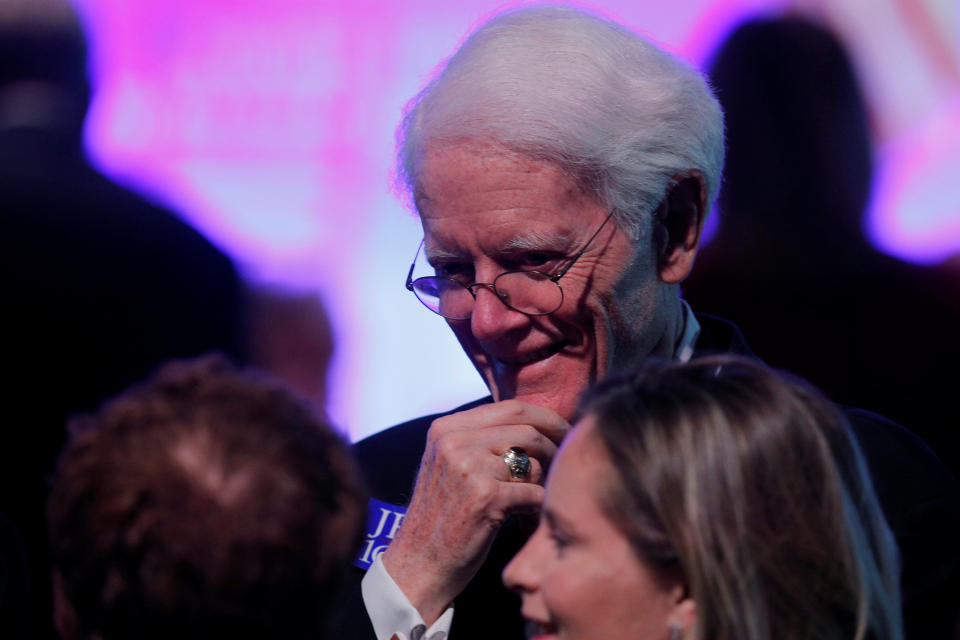The best books on investing
To really understand investing, markets and the world of business in general, you really have to go deep and long. In other words, you have to read books—Yes, still! But what to read and where to start?
To answer those questions, the Yahoo Finance team has created a best-in-business books list. And we’ve divvied this world up into three sub categories 1) Investing, 2) Wall Street, and 3) general business.
Here then is our first in the series:
Best books on investing
“One Up on Wall Street,” by Peter Lynch, 1989
I love this book. It really helped shape my thinking about markets, investing — and even writing about business. Peter Lynch, in case you forgot, was the legendary fund manager of Fidelity Magellan, the premier mutual fund of the go-go mutual fund era. Lynch was a larger-than-life character, who championed buying what you know, i.e., he saw that Dunkin’ Donuts stores were always busy, so he bought the stock. Lynch also coined the phrases “two-bagger” and “three-bagger” (for a stock that doubles and triples.) The book is very readable and filled with anecdotes. A must-read by a grandmaster investor. (See also, “Learn To Earn” and “Beating The Street.”)

“The Intelligent Investor,” by Ben Graham, 1949
If there’s one book that every serious investor must read, it’s “The Intelligent Investor.” It’s written by legendary Columbia finance professor Ben Graham, who was the teacher and mentor of one Warren Buffett. While it was published nearly 70 years ago, the lessons Graham shares are timeless. Particularly interesting are his discussions on psychological mistakes, which are very relevant today. (See also “Security Analysis” by Graham and David Dodd, 1934) —Sam Ro, Yahoo Finance Managing Editor
(Serwer note: My Fortune Magazine colleague Brett Fromson and I tracked down Graham’s sometimes co-author, David Dodd, in a retirement community in Maine in the early 1990s shortly before he passed away. We spent a memorable hour or two asking him about his life, career and investing.)
“The Millionaire Next Door” by Tom Stanley, 1996
Best common sense book about how to get rich in America ever written. The key: Don’t spend money! (On stupid stuff, which is most everything.) Don’t buy NFL tickets, for instance. Instead, go to your kids’ games or local college games; they’re a much better value. Good businesses to run to get rich? Dry cleaners and liquor stores. Who gets all the money in families? The people with problems who need to go to rehab etc. You should guard against this. (See also “The Millionaire Mind,” 2000.)
“The Essays Of Warren Buffett: Lessons For Corporate America” by Warren Buffett and Lawrence Cunningham, 2001
Of course the wisdom of greatest investor of our time must be included on this list. There are many insightful books about Buffett worth reading including, “The Snowball,” by Alice Schroeder and “Tap Dancing to Work,” by my former colleague Carol Loomis, but I like this collection because it’s Buffett’s own words, and you can’t beat that. This is just a collection of Buffett’s letters to shareholders, which have become the holy grail of investing thinking. (See also, well, there’s a whole library of books about Buffett, but I also like “Buffett, Making of an American Capitalist, by Roger Lowestein, 1995, in particular)
“Common Sense on Mutual Funds” by John Bogle, 1999
All Jack Bogle did was start a financial revolution. The founder of the Vanguard Group laid out in simple—and to mainstream Wall Street, devastating—language how active investing (i.e. picking stocks and/or hiring someone to do so) is a losing game, and that the only way wining strategy is investing in a low-cost, broadly diversified mutual fund, like, not coincidently, the Vanguard 500 Index fund. Was he right? Well he wasn’t wrong. Investors have voted with their wallets. Vanguard now has $4 trillion in assets under management, and yet Bogle never got super wealthy off of it—not by Wall Street standards anyway—as Vanguard not unlike a food co-op is owned by its investors. Oh, also Warren Buffett called Bogle “a hero” to investors. Enough said. The book is like Bogle himself, frank, without poppycock and brutally honest. (See also “The Little Book of Common Sense Investing, 2007

“A Random Walk Down Wall Street” By Burton Malkiel, 1973
In 1973, Burton Malkiel argued that people ought to invest in low-cost index funds in his now-prolific book “A Random Walk Down Wall Street.” Low-cost index funds didn’t exist then. Now in its 11th edition, “A Random Walk” is a must-read, accessible tutorial for both first-time and seasoned investors. Malkiel was an advocate for passive investing long before it was in vogue, and he lays out the arguments for broad diversification, rebalancing, reinvesting your dividends, and being tax-aware in an engaging and relatable narrative. Now the chief investment officer of robo-advisor Wealthfront, Malkiel is putting his wisdom into practice. When I met him at Yahoo, he told me that the company embodies everything he believes in when it comes to an investing strategy. “And for me it was like dying and going to heaven,” were his exact words. (See also “Global Bargain Hunting,” 2008) —Melody Hahm, Yahoo Finance writer and reporter
Keep an eye out for our next installment of the best books in business: Best books about Wall Street.
(Yahoo Finance’s Melody Hahm and Sam Ro contributed to this piece)


